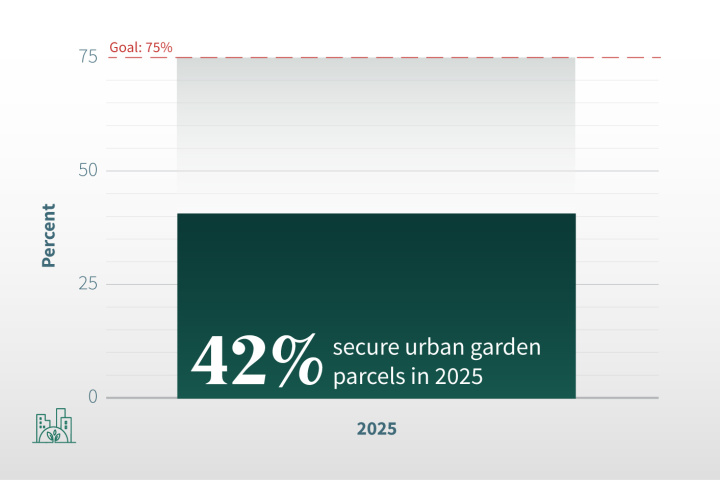By 2035, increase the proportion of urban garden parcels safe from development or legal threats from 44% to 75%.
The benefits of gardens to city residents are well documented – they add greenspace to neighborhoods, positively impact physical and mental well-being, serve as a place where community members connect with one another, and are a source of local food options. In many cases, these spaces are serving communities that need them the most. About 70% of Philadelphia's active urban gardens and farms are in communities where more than 20% of the population lives below the poverty level; approximately 67% of the gardens are also in high-poverty areas where the population of people of color is greater than 50%.
However, in recent years, Philadelphia has experienced a surge of new construction that threatens the existence of urban gardens. Since 2008, at least 140 gardens and farms in Philadelphia have been lost, and fewer than half of those that remain are owned by gardeners or a trusted organization or entity that will protect the garden over time [1]. Preserving the urban garden parcels that are under threat of development is a direct response to what the grower community named as one of its key priorities in Philadelphia’s Urban Agriculture Plan.
In order to allow more Philadelphians to benefit from urban gardens, we have prioritized increasing the proportion of urban garden parcels safe from development or legal threats.
We recognize that there are many ways that organizations and communities can work to increase this proportion and are looking for Philadelphians’ best ideas about how to accomplish this objective in communities across the city. Possible efforts may include support for the ongoing planning, advocacy, and collaboration necessary to reduce the risk of losing gardens in the very neighborhoods that stand to benefit the most from them.
We measure progress on this using the Philadelphia Garden Data Collaborative’s data to track the percentage of secure urban garden parcels in the city.
Notes:
Progress Toward This Objective

